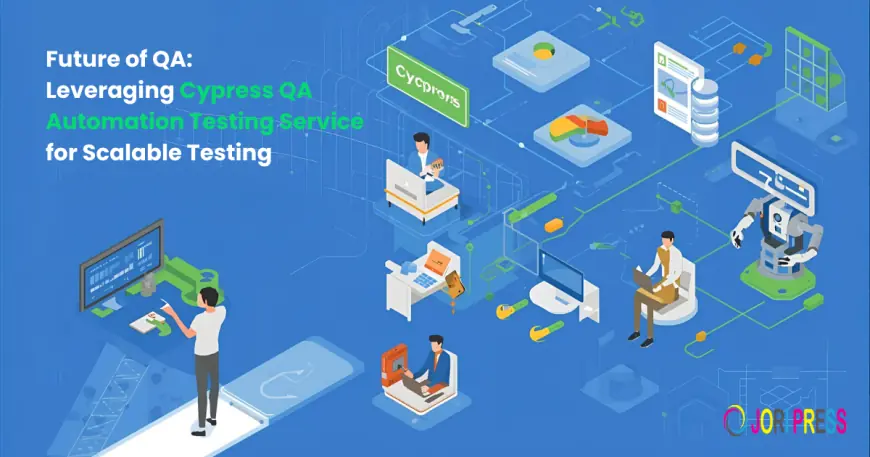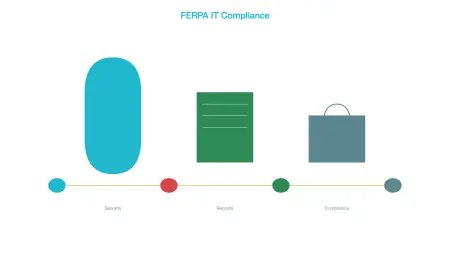Future of QA: Leveraging Cypress QA Automation Testing Service for Scalable Testing
Cypress QA Automation Testing Service ensures scalable, efficient, and reliable testing. Explore how it shapes the future of QA for faster delivery.

The software development landscape has evolved drastically over the past decade. With the rise of web applications, SaaS products, and complex digital platforms, quality assurance (QA) has become more critical than ever. No longer just a checkpoint at the end of development, QA is now an integral part of the software delivery lifecycle.
Traditional manual testing methods often fail to meet the demands of rapid release cycles, leaving gaps that lead to bugs, downtime, and poor user experience. To address this, organizations are increasingly turning to automation testing frameworks that provide speed, reliability, and scalability. Among these, Cypress QA Automation Testing Service has emerged as a leading tool, designed specifically for modern web applications. It enables QA teams to scale testing efforts efficiently while maintaining high standards of quality.
Understanding Cypress QA Automation Testing Service
Cypress is a JavaScript-based end-to-end testing framework that focuses on making testing more reliable, faster, and developer-friendly. Unlike traditional tools such as Selenium, Cypress operates directly in the browser, which eliminates the need for third-party drivers and reduces flaky test issues.
Key characteristics of Cypress include:
-
Automatic Waiting: Cypress waits for elements to load before performing actions, reducing the risk of false negatives.
-
Time Travel Feature: Developers can see snapshots of their application at each step of the test, making debugging easier.
-
Easy Setup: Installing Cypress requires minimal configuration, enabling teams to start automation quickly.
-
Comprehensive Testing: Supports unit tests, integration tests, and end-to-end tests all in one framework.
By combining speed, reliability, and simplicity, Cypress empowers QA teams to deliver consistent results across a growing number of applications and test scenarios.
The Growing Need for Scalable QA Testing
As applications evolve, manual testing alone cannot handle increased complexity. Organizations face multiple challenges:
-
Increased Feature Complexity: Modern applications often have dynamic interfaces, APIs, and microservices, requiring extensive testing.
-
Higher Release Frequency: Agile and DevOps practices demand faster iterations, leaving less time for manual QA.
-
User Expectations: Users expect seamless, bug-free experiences, making high-quality testing critical.
Scalable QA testing allows organizations to automate repetitive tasks, test across multiple scenarios, and ensure consistent quality without slowing down development. Cypress, with its automation-first approach, is a perfect fit for this need.
Key Advantages of Cypress for Scalable Testing
1. Real-Time Reloads and Debugging
One of Cypress's standout features is real-time test execution. When a developer or QA engineer makes a change to a test script or application code, Cypress automatically reloads the test and provides instant feedback.
-
Example: If a login form validation fails, Cypress highlights the exact line causing the issue and even allows inspection of DOM elements at that point.
-
Benefit: This drastically reduces the time spent on identifying and fixing bugs, making the QA process much faster.
2. Fast Test Execution
Cypress executes tests directly in the browser, bypassing the overhead of network communication with external drivers, as required in Selenium.
-
Impact: Tests run faster, allowing teams to cover more scenarios in less time.
-
Example: Regression tests that previously took hours can now execute in minutes, enabling more frequent and reliable deployment cycles.
-
Benefit: Organizations can maintain high-quality releases without slowing down development.
3. Reliable End-to-End Testing
Cypress eliminates the flakiness common in other testing tools by automatically retrying commands until they succeed or a timeout occurs.
-
Example: In an e-commerce application, if a "Checkout" button is dynamically loaded via JavaScript, Cypress waits until it is fully interactive before performing the click action.
-
Benefit: QA teams can trust that tests reflect real user interactions, ensuring accurate and deterministic results across environments.
4. Seamless Integration with CI/CD Pipelines
Cypress integrates effortlessly with Continuous Integration/Continuous Deployment (CI/CD) tools like Jenkins, GitHub Actions, and GitLab CI.
-
Example: Every code commit triggers Cypress tests automatically, validating that new features do not break existing functionality.
-
Benefit: This ensures continuous testing, reduces manual intervention, and accelerates time-to-market, which is critical in Agile and DevOps environments.
How Cypress Supports Agile and DevOps Environments
Modern software development relies heavily on Agile and DevOps methodologies, which emphasize rapid iterations and continuous delivery. Cypress aligns perfectly with these approaches:
-
Continuous Testing: Automated tests run in every build, ensuring rapid feedback.
-
Collaboration: Developers and QA teams can share test results and debug issues together, reducing silos.
-
Flexibility: Cypress supports multiple testing layers (unit, integration, end-to-end), enabling QA to adapt tests to the sprint’s scope.
-
Faster Release Cycles: Reliable automation allows for more frequent releases without compromising quality.
By integrating testing into development cycles, Cypress helps organizations maintain high quality while scaling their software delivery process.
Best Practices for Implementing Cypress QA Automation
To maximize the value of Cypress, QA teams should follow these best practices:
-
Start with Critical User Flows: Focus on automating the most frequently used or high-impact features first.
-
Use Modular Test Scripts: Break tests into reusable functions or modules to reduce redundancy.
-
Integrate Early with CI/CD: Set up automated tests to run on every code push for immediate feedback.
-
Manage Test Data Effectively: Use fixtures and mock APIs to avoid inconsistent results and flaky tests.
-
Regularly Review and Refactor: Update test scripts as the application evolves to maintain efficiency and accuracy.
These practices ensure that Cypress tests remain robust, scalable, and maintainable as the application grows.
Challenges and How to Overcome Them
While Cypress is powerful, QA teams may encounter some challenges:
-
Limited Cross-Browser Support: Cypress is optimized for Chrome and Edge; Firefox support is improving. Use cross-browser testing tools to supplement.
-
Mobile Testing Limitations: Cypress primarily tests web apps, not native mobile apps. Hybrid solutions like Appium may be needed for mobile coverage.
-
Complex Third-Party Integrations: Dynamic content and third-party widgets may require additional Cypress plugins or custom scripts.
By planning test coverage strategically and leveraging Cypress plugins, organizations can minimize these limitations and scale QA effectively.
The Future of QA with Cypress
The future of QA is automation-driven, scalable, and tightly integrated with development workflows. Cypress plays a key role in this transformation:
-
Developer-Friendly: Encourages developers to participate in testing.
-
Faster Feedback Loops: Immediate insights enable quicker fixes and better quality.
-
Continuous Integration: Supports the fast-paced demands of modern software development.
-
Scalability: Handles increasing test complexity as applications grow.
Cypress is shaping a QA future where teams can deliver high-quality software consistently, efficiently, and at scale.
Conclusion
As software complexity increases, QA cannot rely solely on manual testing. Cypress QA Automation Testing Service provides a scalable, fast, and reliable solution for modern web applications. By leveraging Cypress, organizations can accelerate release cycles, improve test coverage, and ensure higher software quality, making it a critical tool for the future of QA.
FAQs
Q1. Is Cypress suitable for all types of web applications?
Yes, it works best for modern JavaScript frameworks like React, Angular, and Vue but can test traditional web apps effectively.
Q2. Can Cypress be integrated with CI/CD pipelines?
Absolutely. It integrates with Jenkins, GitHub Actions, GitLab CI, and other CI/CD tools.
Q3. How does Cypress improve test reliability?
It automatically waits for elements and retries commands, reducing flaky tests.
Q4. Is Cypress suitable for mobile testing?
Cypress is ideal for mobile web applications but has limitations for native mobile apps.
Q5. Why choose Cypress over Selenium for scalable testing?
Cypress offers faster execution, real-time debugging, and simpler setup, making it ideal for modern Agile and DevOps workflows.
What's Your Reaction?
 Like
0
Like
0
 Dislike
0
Dislike
0
 Love
0
Love
0
 Funny
0
Funny
0
 Angry
0
Angry
0
 Sad
0
Sad
0
 Wow
0
Wow
0




















































